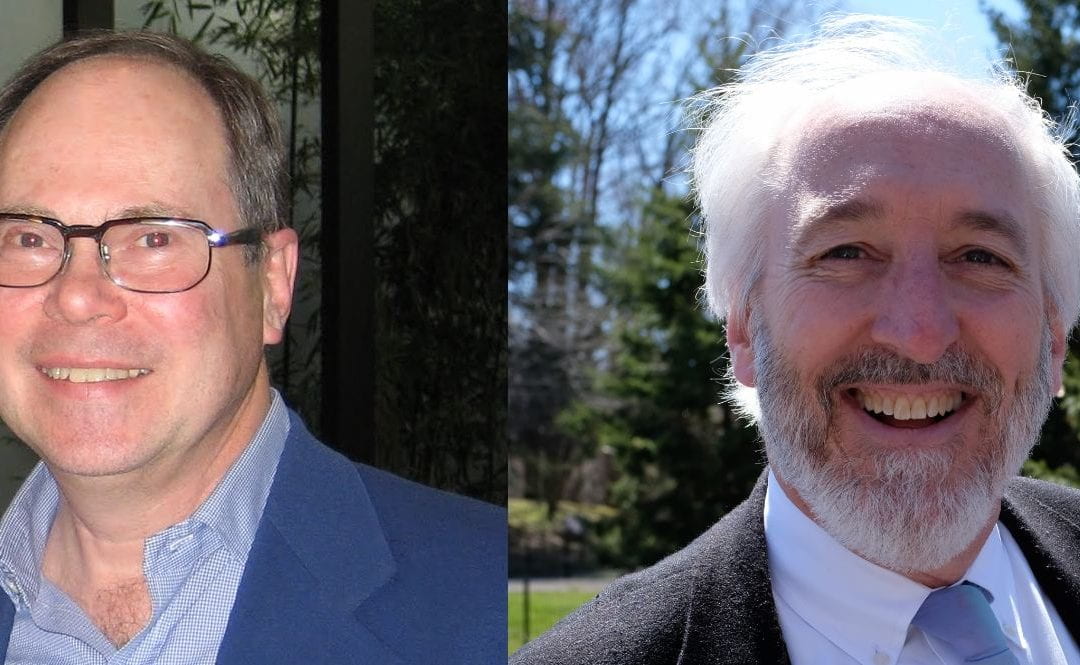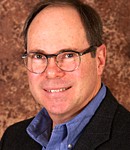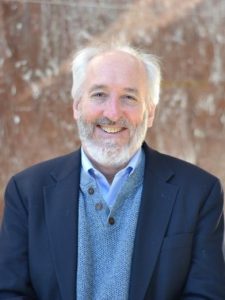From Five SBU Faculty Rise to the Rank of SUNY Distinguished Professor on Stony Brook University News, April 20, 2021.
Stony Brook University faculty members Anissa Abi-Dargham, J. Kirk Cochran, Maurizio Del Poeta, Yi-Xian Qin and Paul Shepson have been elevated to the rank of Distinguished Professor — a prestigious honor bestowed upon professionals of the highest caliber — by the State University of New York Board of Trustees.
“Appointment to a Distinguished Professorship at the State University of New York is a difficult rank to attain,” said SUNY Chancellor Jim Malatras. “You have made major contributions to the field, and are considered a pioneer with your groundbreaking and innovative research. Your commitment to professional excellence is reflected in your appointment to the State University’s highest academic rank. As a newly active member of the SUNY Distinguished Academy, you will work with other Distinguished Faculty across the SUNY system to encourage a renewed commitment to quality instruction, service on our campuses, and strong leadership development for our newer faculty.”
“I join Chancellor Jim Malatras in stating that ‘your dedication to the highest principles of our profession and your continuing contributions to SUNY are a source of pride and inspiration for us all,’” said Stony Brook University President Maurie McInnis. “All of us at Stony Brook University are extremely proud of all you have accomplished. On behalf of the entire University community, thank you for your outstanding service to Stony Brook.”
About the Faculty
J. Kirk Cochran is Professor of Marine Geochemistry in the School of Marine and Atmospheric Sciences. He uses natural radionuclides to study Earth surface processes. Much of his recent research has focused on using naturally occurring radionuclides to determine rates of particle cycling and particulate organic carbon fluxes in the open ocean. This work has as its goal an understanding of the fate of carbon in the ocean and has been carried out in the North Atlantic, Pacific and Southern Oceans, as well as the Mediterranean Sea.
Kirk came to Stony Brook after working at the Woods Hole Oceanographic Institution in Woods Hole, MA. For his undergraduate and graduate education he was mentored by two pioneers who worked with natural series radionuclides, J.K. Osmond at Florida State and Karl K.Turekian at Yale. Since his doctoral work, Kirk has demonstrated not just his skill in the use of isotopes to determine sources and time scales in the geosciences, especially oceanography, but also helped us all to develop a deep understanding of solid earth and ocean processes.
Kirk has an outstanding publication record (>180 papers and books; H-index 67 (Google Scholar)), his papers published in major international oceanographic journals (including 1 in Science and 8 in Nature-family journals). He has published on an exceptionally wide variety of topics. Using a very diverse set of isotopes to look at a wide variety of environments, he has made seminal contributions to our knowledge of rates and processes in the open ocean from Antarctica to the tropics (sedimentation, particle scavenging, export fluxes), coastal bay and lagoon sediments (sedimentation, particle scavenging), groundwater (especially submarine discharge to the ocean), and biogeography (animal growth rates, lifespans and habitats). Kirk has tackled basic science questions and also more applied environmental problems (metal and radionuclide contamination), and brought his scientific rigor to both areas. He has also been very active in methods development and intercalibration exercises. His published papers include methods development, radionuclide inventories, process analysis, syntheses, and reviews. One of the hallmarks of Kirk’s work is that throughout his research career, he has written excellent, scholarly review papers to put his work in a wider perspective, and make his (and others’) work more accessible to all. Kirk’s clarity of thinking and ability to explain how the world works through his writing and lecturing is truly exceptional.
Kirk also has an outstanding teaching record, fully commensurate with what one would expect for a Distinguished Professor. Kirk is very generous with his time, giving research lectures at other universities, serving on steering committees and review panels, and serving as the editor of the Encyclopedia of Ocean Sciences. In addition, Kirk has been fostering ties between the U.S. and France, a contribution to international science.
Kirk is greatly respected within SoMAS, one measure of which is that he was asked by the faculty to serve as Interim Dean for what was then the Marine Sciences Research Center. Despite the substantial impact on his research, teaching, and personal life, he accepted the responsibility. He served with remarkable integrity and an even-hand (where do we find such people!?), emerging from his administrative duties with an even greater level of respect from his colleagues than when he began; a very impressive outcome given the ongoing financial challenges that typify Stony Brook University.
Paul Shepson is Dean of the School of Marine and Atmospheric Sciences. He conducts research on atmospheric chemistry and composition, interactions between the atmosphere and the surface, and how climate change impacts the physics, biology, and chemistry at the surface and in the atmosphere. Shepson studies Arctic and coastal halogen chemistry, greenhouse gas source and sink measurements, and atmospheric aerosols. He is a Fellow of the American Geophysical Union, and has approximately 220 peer-reviewed publications on various issues related to atmospheric and analytical chemistry. He is also an avid pilot with instrument, commercial, and multi-engine ratings.
Paul and his wife, Jody, joined our SoMAS family in 2018. He has been a dynamic and engaged leader, committed to the SoMAS vision and prospects for its future growth and success. Paul has also been committed to pushing SBU towards new initiatives, such as leading efforts for the proposed Institute for Partnerships in Innovation, Resilience, and Environmental Solutions (INSPIRES), which draws inter-disciplinary expertise and capabilities from across campus to tackle environmental problems. He was a key partner/co-PI in establishing SoMAS/SBU as the new host for the Peconic Estuary Partnership, securing a future long-term engagement with the program.
As Dean, Paul manages a multitude of responsibilities. Despite the extraordinary financial and administrative challenges that seem to compound and repeat, Paul’s relentless spirit and tireless leadership serve as a model for all of us. His advocacy on behalf of our program, and for the people from which it is comprised, is unparalleled.
Paul’s scholarship has been recognized by his election as an American Association for the Advancement of Science Fellow, a fellow of the American Geophysical Union, the Walter Orr Roberts Lecturer award from the American Meteorological Society, and the American Chemical Society Award for Creative Advances in Environmental Science and Technology. Paul has served as the Director of Atmospheric and Geospace Sciences Division at the National Science Foundation, as a member of the White House Office of Science and Technology Policy Space Weather Operations, Research and Mitigation Task Force, and currently serves as a member of the NYS Climate Action Council. He is a deeply impactful investigator with national and international reputation and recognition.
Paul has been a pioneer of studies on atmospheric chemistry and climate change. His highly cited work has focused on understanding air-surface interactions in the Arctic, in forest, and urban environments. He currently has 244 peer-reviewed publications and an H-index of 72. He has mentored ~80 MS, Ph.D. and postdoctoral trainees, and has formed numerous, very productive national and international teams studying atmospheric and environmental science. His research program has developed novel instrumentation to study the mechanisms and surface processes that lead to surface level ozone depletion in the Arctic. His work has provided exceptional insight, is highly impactful and has, and continues to, inform policy about air quality and climate. Paul has ensured that his research program at Stony Brook continues to flourish (while focusing on doing his principal job!) with funding from the National Institute of Standards and Technology, National Science Foundation, and the Environmental Protection Agency.
About the SUNY Distinguished Professorship
The Distinguished Professorship is conferred upon individuals who have achieved national and/or international prominence and a distinguished reputation within their chosen field. This distinction is attained through extraordinary contributions to, and impact on, the candidate’s field of study, often evidenced by significant research and/or creative activity. Moreover, the candidate should be a role model for students and other faculty and their work must be of such character that it has the potential to elevate the standards of scholarship or creative activity of colleagues both within and beyond their academic fields. Their work must be of such quality that students and scholars on other SUNY campuses would benefit from lectures and seminars, or other appropriate presentations the faculty members might provide. Further, to be eligible for nomination, a faculty member must have attained and held the rank of full professor for five years, and must have at least one year of full-time service at the nominating institution.
More information about SUNY’s faculty award program is available online.







You must be logged in to post a comment.